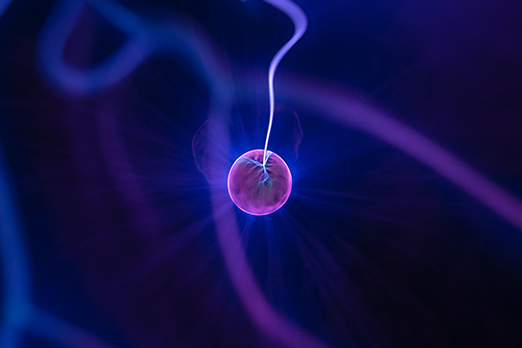What is disinfection with UV light?
UV radiation, which is not visible to humans, is divided into the four types UV-A, UV-B ,UV-C and EUV. The latter two are strongly bactericidal. This means they kill viruses and bacteria within seconds if they are given a sufficient dose.
But how can UV rays be used as a disinfection method?
Industrially, disinfection by UV light has been successfully used for years for the disinfection of ventilation systems and surfaces in food production, for the disinfection of room air, or the treatment of drinking water. There UV-C lamps with wavelength ranges from 100 nm to 280 nm are used. The photons of the high-energy irradiation of such a lamp destroy the genetic material (DNA) of almost all germs.
In hospitals all over the world, disinfection robots with UV-C lamps are increasingly being used. Due to the Corona Pandemic they are of special importance in these days.
Also the sun can be used for disinfection. Their natural UV-A (not only UV-A!) rays are used for disinfection of water in developing countries. This process is called SODIS (Solar Water Disinfection).
Properties of disinfection processes with UV-C light
UV-C rays damage the skin as well as the eyes and are thus not suitable for the disinfection of living organisms. Therefore, we advise against using it on the human body.
With the disinfection of surfaces it depends strongly on their condition. If they are uneven, the rays may not reach all areas. If the surface is possibly shaded, this method comes to its limits.
The disadvantages of the chemical disinfection procedures such as environmental pollution, smell (--> UV-C can let ozone develop from breathing air) or health-endangering by-products are void with this method just like with P-Bod. A further advantage is that no resistances can be developed against UV-C radiation. In addition, the costs are low and the handling is simple in most cases.
Advantages of P-Bod compared to disinfection with UV-C light
Scalable and simple
P-Bod requires only an energy source and ambient air. Therefore, P-Bod is almost arbitrarily scalable and low operating costs can be guaranteed.
Applications on human skin
Viruses and bacteria cannot develop resistance to P-Bod either. In contrast to the disinfection with UV-C light, P-Bod can also deal with uneven and amorphous surfaces. In addition P-Bod can be used also for the disinfection of human skin. This would not be possible with UV-C light due to the health risk.
Possible areas of application are for example hand dryers or small hand applicators, which also carry out hygienic disinfection of the hands.
